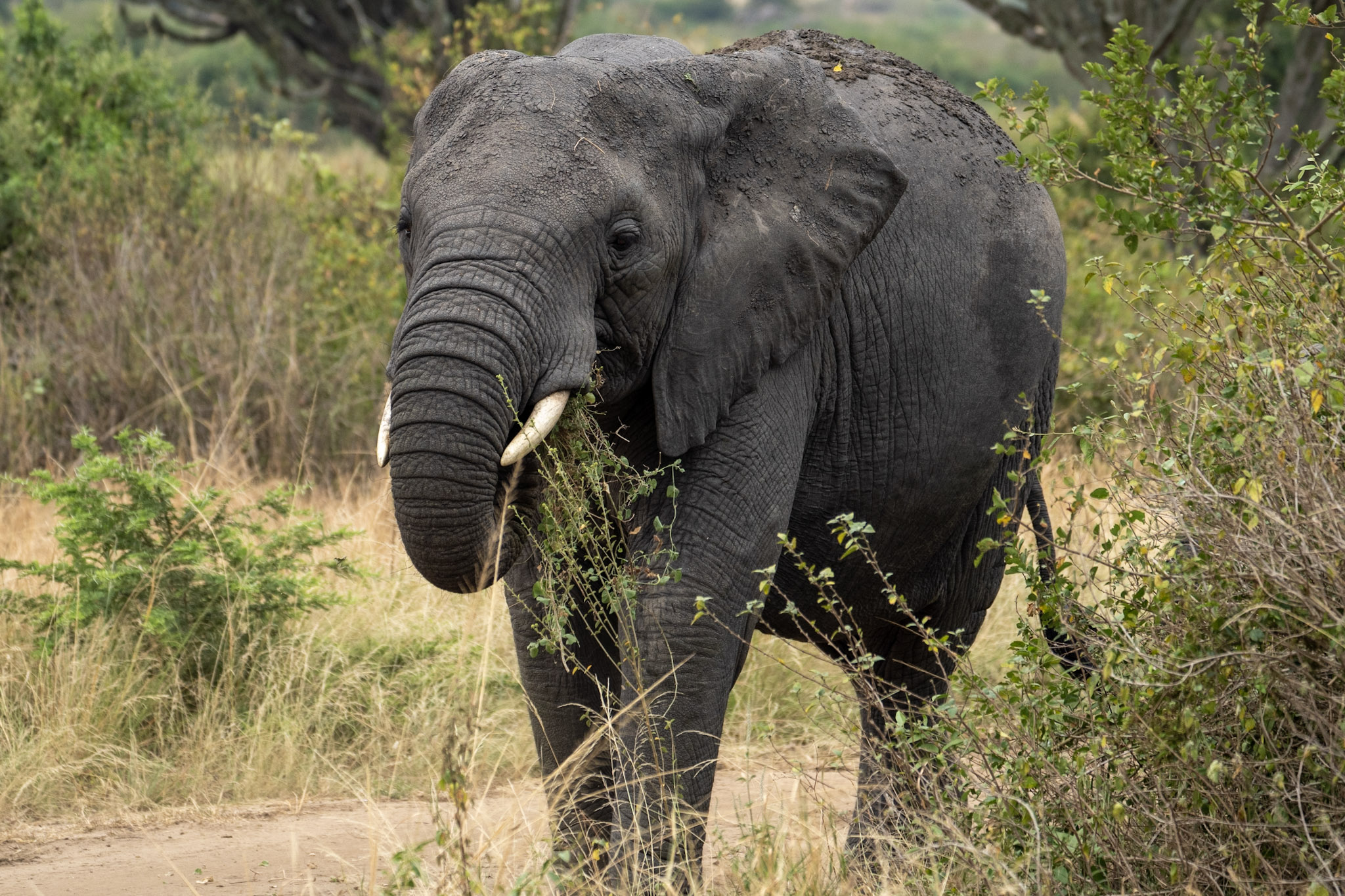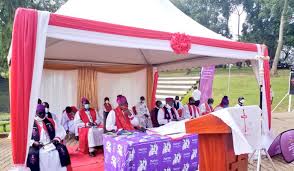Like in many African countries, the advent of Christianity in Uganda never came on a silver platter. In fact, the period between 31st January 1885 and 27th January 1887, was covered by tears and bloodshed within the central region of Uganda mostly known as the historical Buganda Kingdom. This historical event is celebrated every 3rd June in commemoration of the Uganda Martyrs.
 Today the 03rd June, 2020 – is a unique Martrys’ day to remember in the History of Uganda. With the current on going unprecedented effects of the infamous Covid-19 pandemic, the catholic church was left with no option but to call off the martry celebration event. A total of Only 60 catholic priest and other dignatories who could follow the Ministry of Health guidelines against the spread of Corona virus represented the masses.
Today the 03rd June, 2020 – is a unique Martrys’ day to remember in the History of Uganda. With the current on going unprecedented effects of the infamous Covid-19 pandemic, the catholic church was left with no option but to call off the martry celebration event. A total of Only 60 catholic priest and other dignatories who could follow the Ministry of Health guidelines against the spread of Corona virus represented the masses.
Christian missionaries, both Catholic and Anglican, arrived in Africa during the late 19th century. The first of the Catholic missions was established by the White Fathers, a missionary society founded by the French cardinal Charles Lavigerie, the archbishop of Algiers and Carthage. (The White Fathers took their name not from the color of their skin but from the color of their long tunic.) As early as 1878, when he was asked by Pope Leo XIII to take charge of the missions in equatorial Africa, Lavigerie began a series of annual caravan journeys to central Africa as part of the Catholic evangelization of the area. The next year, a Catholic mission was founded in what is now Uganda.
Baganda were a group in which European missionaries took particular interest. Also it was the largest and most powerful of the local ethnic groups in Uganda. Actually the country got her name from this strong Kingdom. Edward Rice (a friend of Thomas Merton) offers an overview of the importance of the region and the Baganda people in his book Captain Sir Richard Francis Burton, a biography of the Victorian explorer and linguist. Rice recounts that the Baganda were among the richest and most advanced tribes in central Africa. Moreover, they “bore a certain patina of civilization that was to astound Europeans later, with well-organized bureaucracies, statesmanship of a superior order, finely developed arts and architecture, and unusual handicrafts.” Yet the civilization also had a dark side, according to Rice, with both rulers and subjects having the reputation of being “unnaturally cruel.”
Kabaka (King) Mutesa 1 (Full names – Mukaabya Walugembe Kayiira) the 30th Kabaka of the Kingdom of Buganda, exemplified this cruel streak when he took the throne in 1856, to ensure his own political survival he buried his brothers alive—all 60 of them. Yet he adopted a more or less benign approach to the Christian missionaries. (Butler’s Lives of the Saints calls him a “not unfriendly ruler.”) In essence, Kabaka Mutesa i allowed his subjects to choose among any of the faiths being imported into his kingdom—Catholic, Protestant, or Muslim. In turn, each group attempted to assert its influence on the king’s court through the conversion of high-ranking officials. Mutesa i, however, pointedly did not choose any of the doctrine. In 1884 he died, still adhering to the local traditional religions.
Conversion to any faith among the Baganda meant a rejection of the traditional religions and this was against the cultural norms of the time. It also implied a setting aside of some of the traditional ways of life, an adherence to a new set of moral and religious standards, and, often, the establishment of a new set of alliances, based on religious belief. As a result, the group of new believers (called abasomi, or readers) came to be regarded with suspicion by other Baganda as a dangerous rebel faction. During the reign of Mutesa i. However, these suspicions were kept under check by the cultural and tradition leaders of Buganda Kingdom.
With the succession of his son, Kabaka Mwanga ii (Full names – Daniel Basammula-Ekkere), the situation altered dramatically. As a young man, Mwanga ii had shown some favor to the Christian missionaries, but his attitude changed as soon as he took the throne. According to tradition, the kabaka was the center of all authority and power in the kingdom, and he could use his subjects as he wished. But the presence of the missionaries was severely diminishing his authority among the converts. Kabaka Mwanga ii was also a practicing pedophile, and upon discovering that the young men who had converted to Christianity were beginning to reject his orders, he grew enraged. As a result, the king sought to eliminate Christianity from his kingdom and began a violent persecution of the missionaries, the new Christians and all converts.
In January of 1885, Kabaka Mwanga ii had three Baganda Anglicans dismembered and their bodies burned. These were, Joseph Rugarama, Makko Kakumba, and Noah Serwanga at Busega. In October of that same year the newly arrived Anglican bishop, James Hannington, was murdered along with his caravan on their way to the region. In response, Joseph Balikuddembe Mukasa, a senior adviser to the kabaka and a recent Catholic convert, reproached the angry Kabaka Mwanga iii for executing Bishop Hannington without having offered him the customary opportunity to defend himself. Kabaka Mwanga ii, very furious at what he saw as Mukasa’s disrespect, had him beheaded on November 15, 1885 near Nakivubo stadium. Joseph Balikuddembe Mukasa became the first of the black Catholic martyrs on the continent.
Among those now in obvious danger was the head of the royal pages, Charles Lwanga, who had been instructed in Christianity by the White Fathers and who was now Mukasa’s successor in guiding the young converts. The day of Joseph Mukasa’s death, Lwanga went to the Catholic mission with other catechumens (those who were receiving religious instruction), and together with them he was baptized by Siméon Lourdel, one of the White Fathers. Among the pages was Kizito Omuto. (Omuto means Little one), aged fourteen years. The next day the pages were summoned into the royal court by the enraged kabaka. The king had learned that one of the young pages in his court, Mwafu, had been receiving religious instruction from another page, Denis Sebuggwawo. The king demanded that the pages confess their allegiance. All but three of the Catholic and Anglican pages did so. Mwanga, apparently baffled by this solidarity, put off their executions. At one point Charles Lwanga—echoing the stance of another, earlier, martyr, St. Thomas More—stated his allegiance to the kingdom of Buganda, declaring his willingness to lay down his life for the king. He would not, however, abjure his faith.
On May 26, the pages were called into the royal courtyard to hear their fate. From this point on, the story of the Ugandan martyrs closely resembles those of the early Christians. Fr. Lourdel, who had repeatedly pleaded for an audience with the king, was an unwilling witness. All of the men declared that they were prepared to remain Christians until death. In the end, Kabaka Mwanga ii decreed that all of them—sixteen Catholics and ten Anglicans—be marched to Namugongo, 8 miles away, where they would be burned. On their way to execution, bound by ropes and shackles, they were marched past Fr. Lourdel, who would later attest to their remarkably calm disposition. They waited for a week before being massacred and by this time they could pray to God (Katonda) for mercy but all in vain.
During that time the martyrs prayed and sang hymns; the Catholics among them recited morning and evening prayers, grace before and after meals, as well as the Angelus and the rosary, in preparation for their deaths. On June 3, before the execution of the rest of the young men, Charles Lwanga was put to death by the king’s men. He was wrapped tightly in a reed mat, a yoke was hung on his neck, and he was thrown onto a pyre. Taunting his executioners, Charles is said to have shouted, “You are burning me, but it is as if you are pouring water over my body!” Before he died he cried out, “Katonda,” or “My God.”
As the flames rose, their voices could be heard praying and encouraging one another. The last words of Kizito Omuto were “Good-bye, friends. We are on our way.”
In all, 45 Christians were martyred at Namugongo. Out of which 22 Catholics and 23 Anglicans.
In 1964, Pope Paul VI canonized all twenty-two of the Catholic martyrs. 5 years later, as the first pope to visit sub-Saharan Africa, he laid the foundation stone of the shrine to be built in Namugongo in honor of St. Charles Lwanga and his companions. The shrine was completed in 1975, on June 3, now the feast day of the Ugandan martyrs.
To date, Namugongo Martyrs shrine remains a significant stop for dark tourism in the country.








